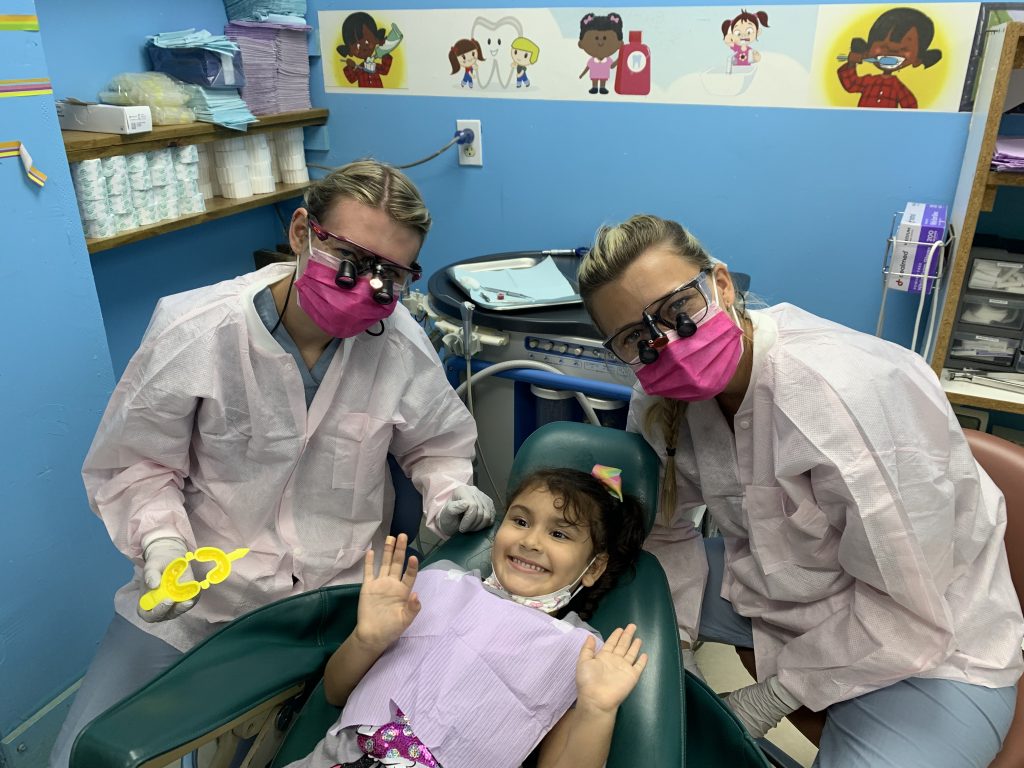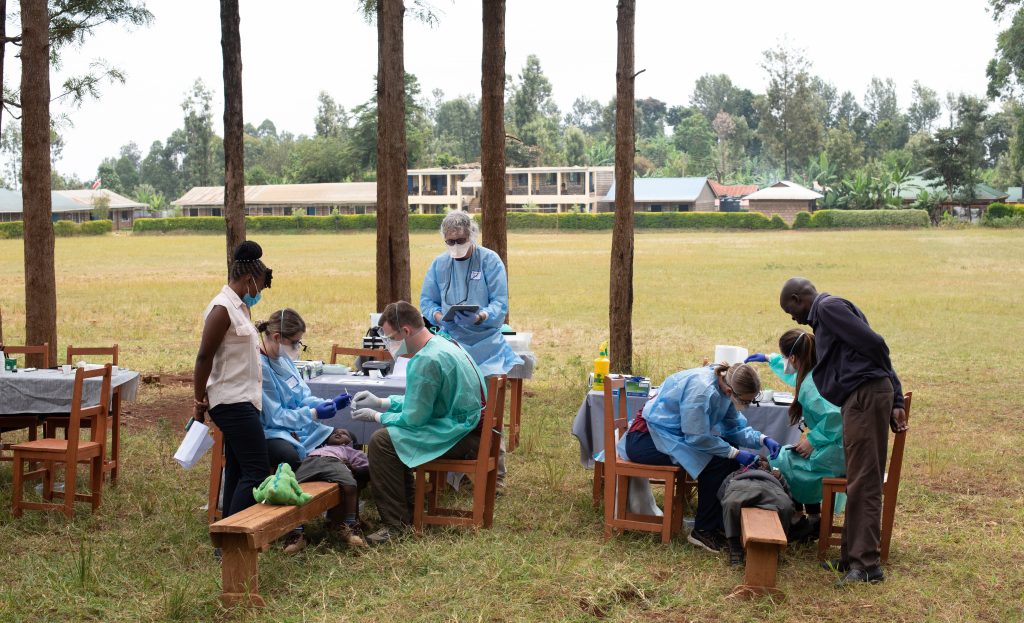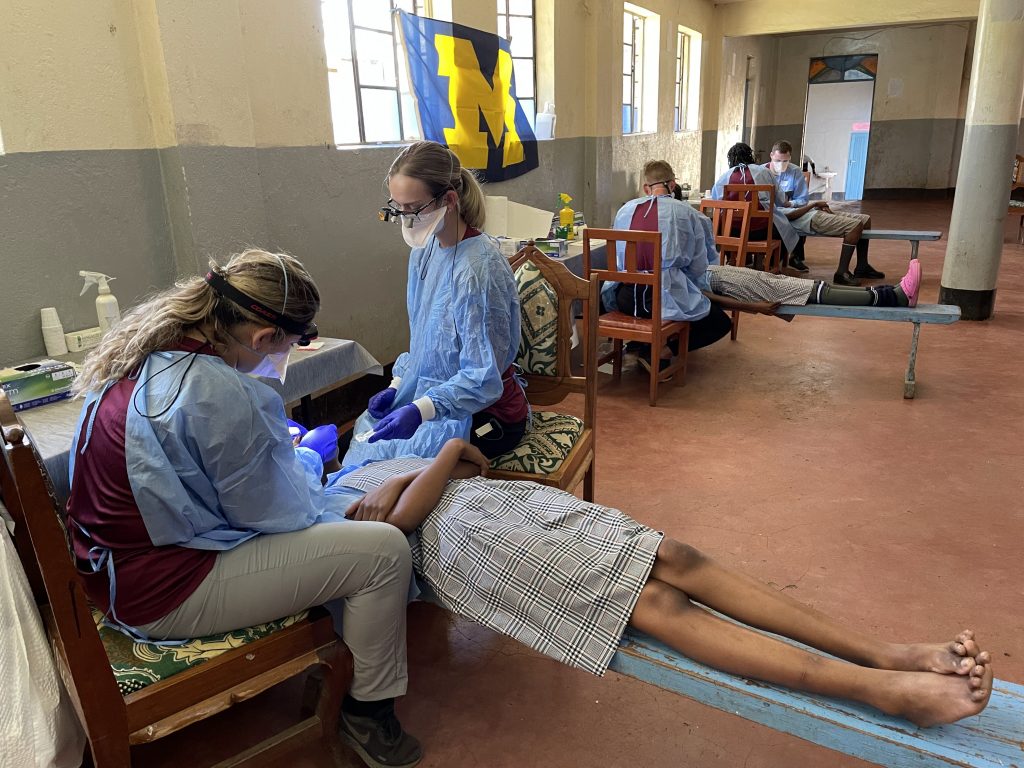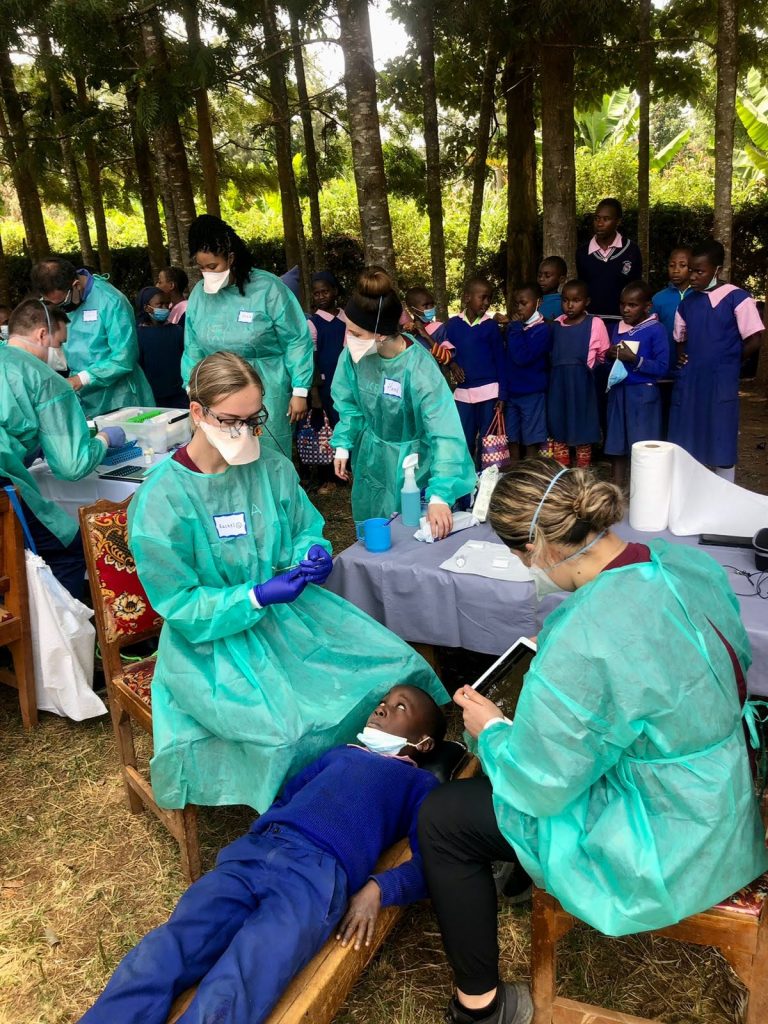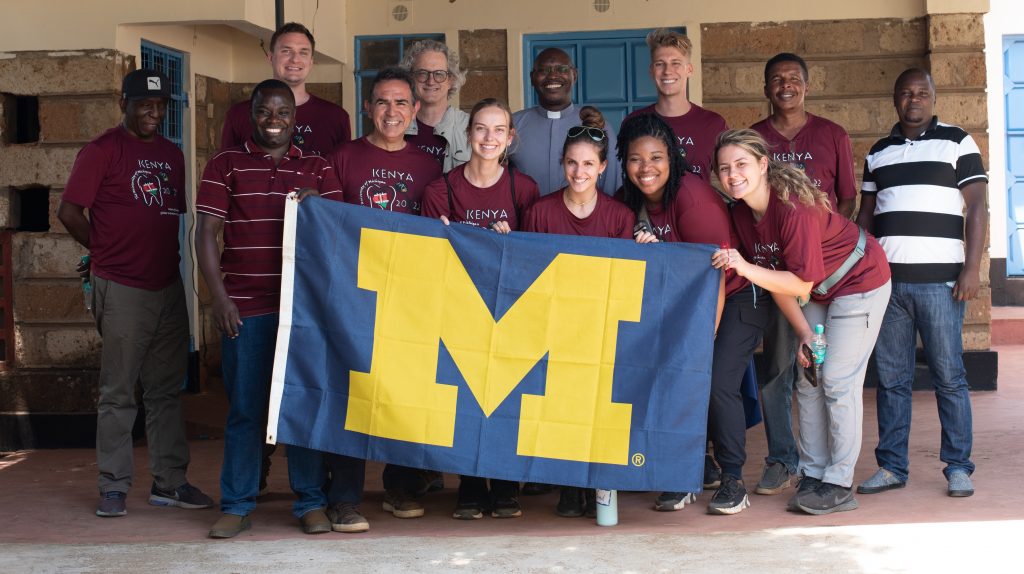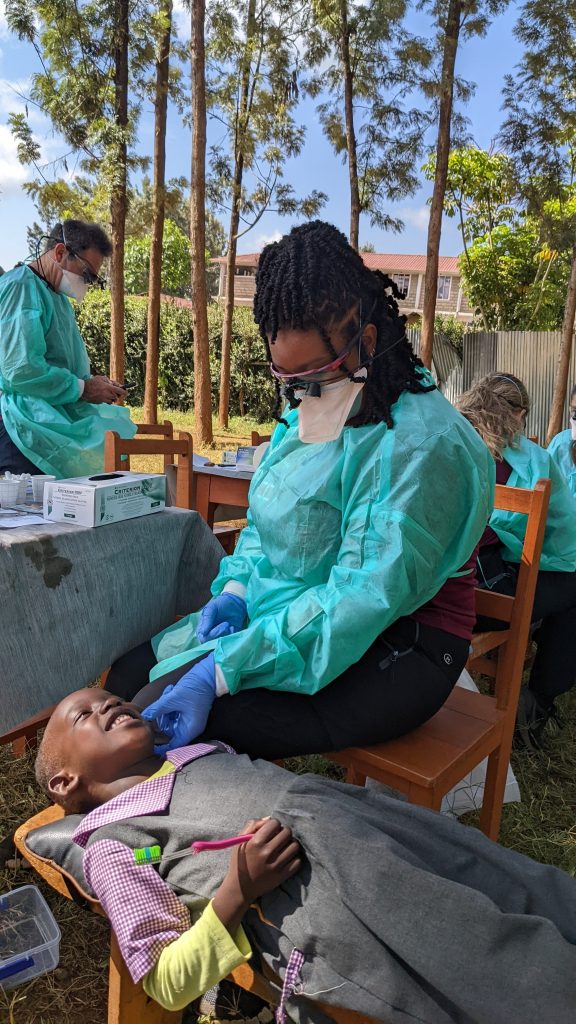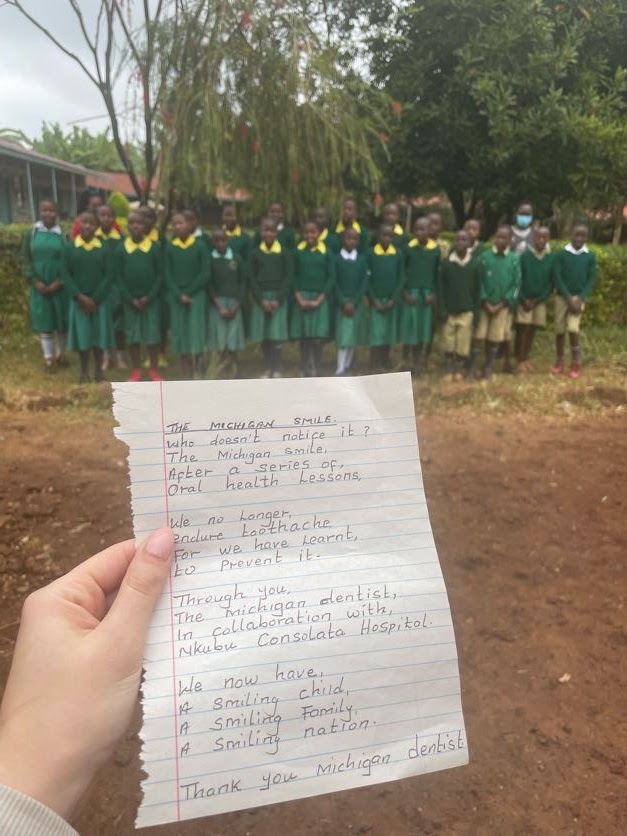Ann Arbor, Michigan, Sept. 1, 2022 – After a two-year pandemic hiatus, the School of Dentistry’s Global Initiatives in Oral & Craniofacial Health resumed its overseas outreach this year, sending teams of students and faculty to four countries on three continents. Teams went to Kenya, Israel, Honduras and Brazil to implement community prevention programs, provide dental care to the underserved and to learn from the expertise of those providing clinical care in other cultures and settings.
Such trips meet oral health needs in low-income areas and provide important learning and cultural competency opportunities for students, said Margherita Fontana, director of the Global Initiatives, or GIOCH, program. “In-person international interactions with our global partners further increase the School of Dentistry’s reach and impact on improving oral health around the world,” she said. “It also offers important opportunities for our students to further learn about global health, health equity, cultural competency, social determinants of health in different global contexts and different healthcare systems, as well as important clinical skills.”
In February, faculty members Dr. Carlos González-Cabezas, the former director of GIOCH, and Dr. Robert M. Eber, the school’s director of clinical research, led a team of six students on a two-week trip to Kenya to continue a preventative/early care program for hundreds of underserved children.
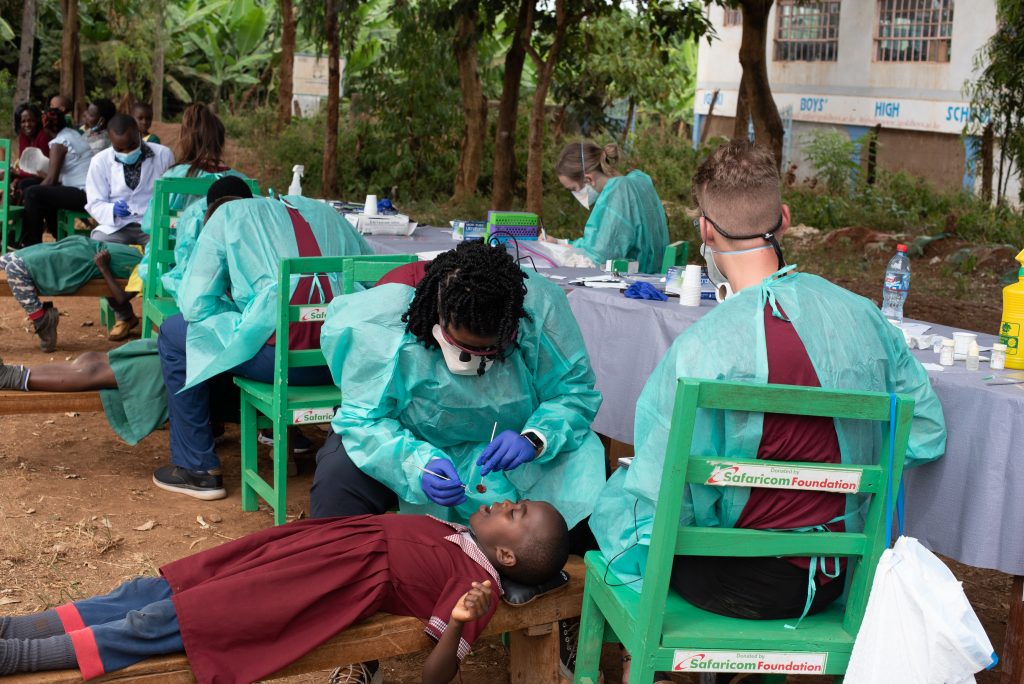
In late April, another team of four students, led by faculty member Dr. Theodora Danciu, traveled to Israel where they spent time at dental schools in Tel Aviv and Jerusalem to discover more about the learning environment from Israeli dental students. They also visited Shalva, a facility for children with disabilities, and explored various Israeli cultural and historical sites.
In August, a team of four students led by faculty member Dr. Cristiane Squarize attended classes and shadowed students and faculty in the dental clinics of the Bauru School of Dentistry in Brazil. The team also learned about the cleft lip/cleft palate specialties at the Centrinho hospital, where patients receive comprehensive care.
Also in August, another team of four students led by Fontana and González-Cabezas traveled to Honduras to implement a new community-based preventative program and provide dental care at schools in underserved areas. The students also worked in a community clinic, Clinica Esperanza, which provides those who cannot afford dental care with necessary treatments, most often extractions and emergency care.
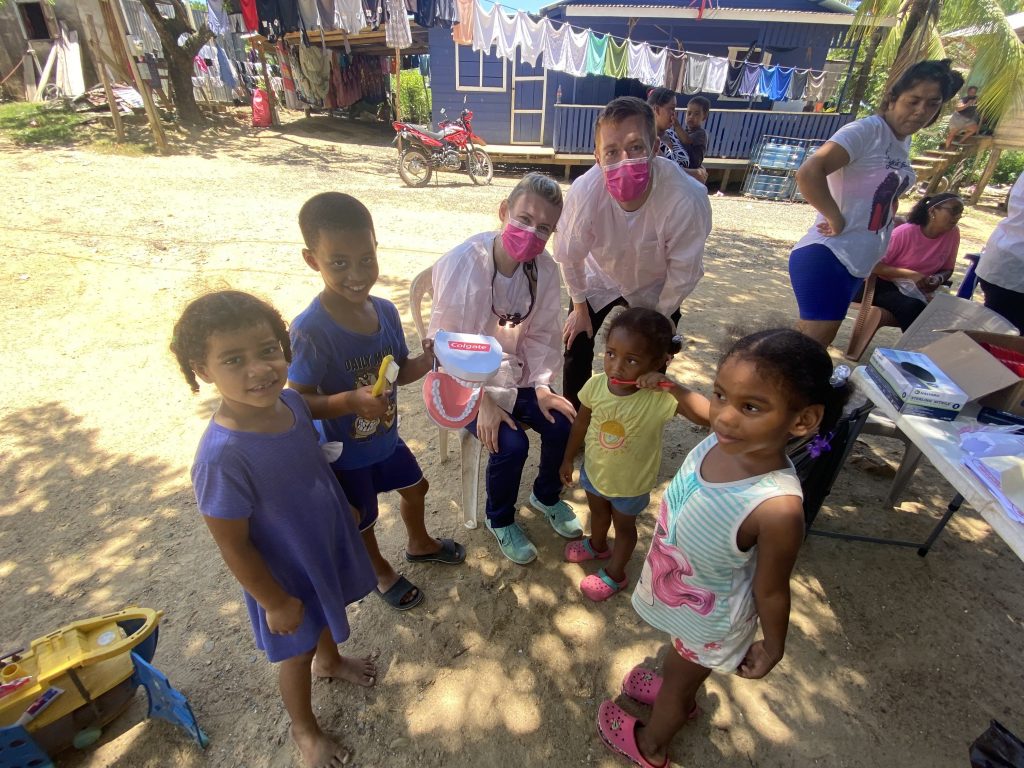
The Kenya trip has been held annually, except during the pandemic, for more than a decade. Once again this year, the students provided oral examinations, gave oral hygiene instruction, applied fluoride and sealants, and provided restorative dental treatments for children in the rural areas around the city of Meru. They visited four elementary schools and treated children ranging in age from 3 to 14 years old.
More than 80 percent of children in the area have tooth decay, González-Cabezas said, making the emphasis on preventive treatments and oral hygiene instruction particularly important. To that end, they also trained local teachers to keep the oral hygiene efforts going after the U-M team’s departure. Children with advanced decay or more complicated dental issues were referred to a hospital for treatment.
Each dental student provided oral examinations and treatment to about 30 to 40 students. They set up makeshift clinics, often outdoors, using benches, tables and chairs from the schools. Sometimes the lack of a more controlled, clinical setting was a bit of a challenge, but the friendliness and cooperation of the children more than made up for it, students said.
“When we would show up to schools, it made us feel like celebrities. The kids would all rush out to greet us, hands outstretched looking for high-fives,” said Parker Johnson, a fourth-year dental student. “The smiles on their faces and their eagerness to hop on the bench to get their teeth checked will stick in my memory for a long time.”
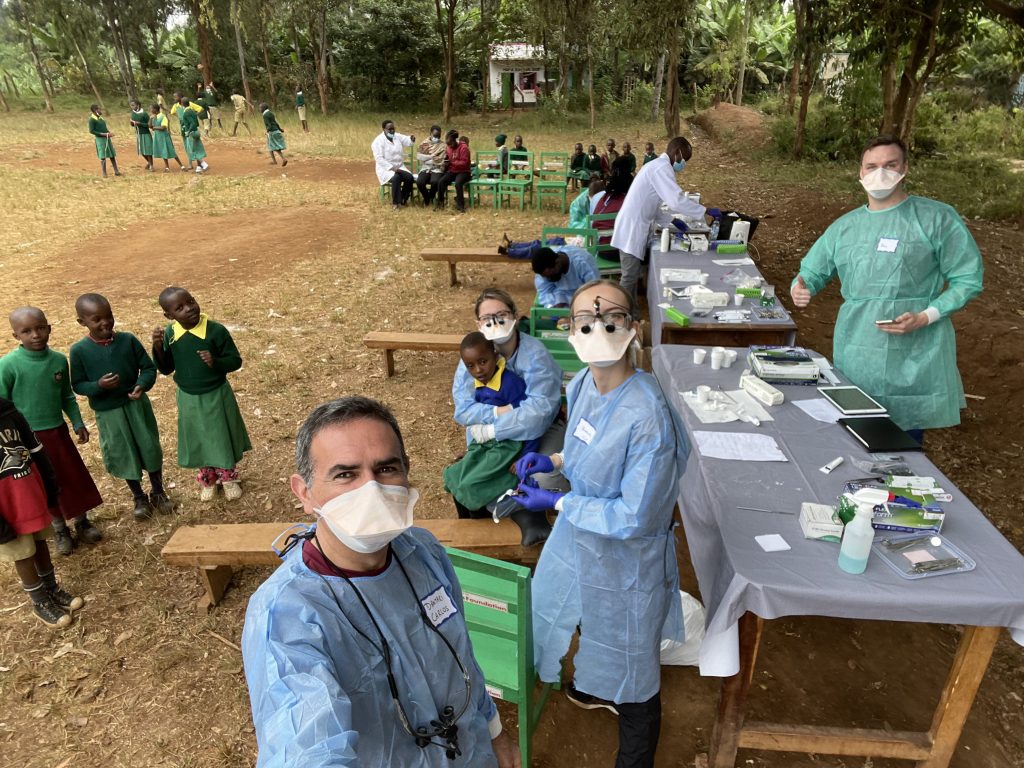
Student Hend Massarani, also in her fourth year, had expected the children to be somewhat reluctant to receive dental care but found the opposite to be true. “Most of the kids I worked with were incredibly patient and so strong at such a young age.” She remembered one 6-year-old girl who was in a considerable amount of pain. “She shed some tears, but she was insistent on being a cooperative patient,” Massarani said.
One of Massarani’s more memorable interactions was not with a young patient but with a dental technician. “He was extremely enthusiastic about learning what we were doing and was an incredibly meticulous provider,” she said. “He asked to use my loupes at one point during the day and was captivated by the difference it made in treatment of patients. It was definitely humbling to remind myself that many of the things we consider a necessity in dentistry are truly a luxury outside of the bubble we are within in the U.S.”
Besides providing care to the children, the team also sought to help general healthcare providers improve their knowledge of oral healthcare. Eber and three dental students gave a presentation about the physician’s role in oral health to physician assistants and faculty members at the Meru University for Science and Technology. The talk covered oral examination, periodontal disease recognition and treatment; diagnosis and treatment of common oral lesions; and diagnosis, prevention and treatment of early childhood caries.
Johnson said the trip increased his appreciation for the quality of oral and medical care at home and the value of this dental school education at the University of Michigan. “After this trip, I realize more how this privilege has allowed me to hone this talent and passion of mine to help others, wherever in the world they might be. And it is my responsibility to share it,” he said.

Massarani agreed. “We work alongside the best of the best, and it is quite a privilege to even walk the halls of the school,” she said. “There is opportunity pouring out of the school. And after leaving Meru and meeting dental professionals working there, I found that our baseline is luxury to them.”
Such perspective is one of the main goals of the trips, Eber said. “Students who have participated over the years have often said that the Kenya program was their most memorable experience from dental school and that it changed their lives and view of the world,” he said. “Our hope is that the Kenya program will instill a desire for our graduates to continue to give back to their communities and also focus on addressing global challenges. It is a cultural awakening for many students, but they all come away forever changed.”
More information about the School of Dentistry’s Global Initiatives program is available on the school website here: https://dent.umich.edu/about#global-initiatives
